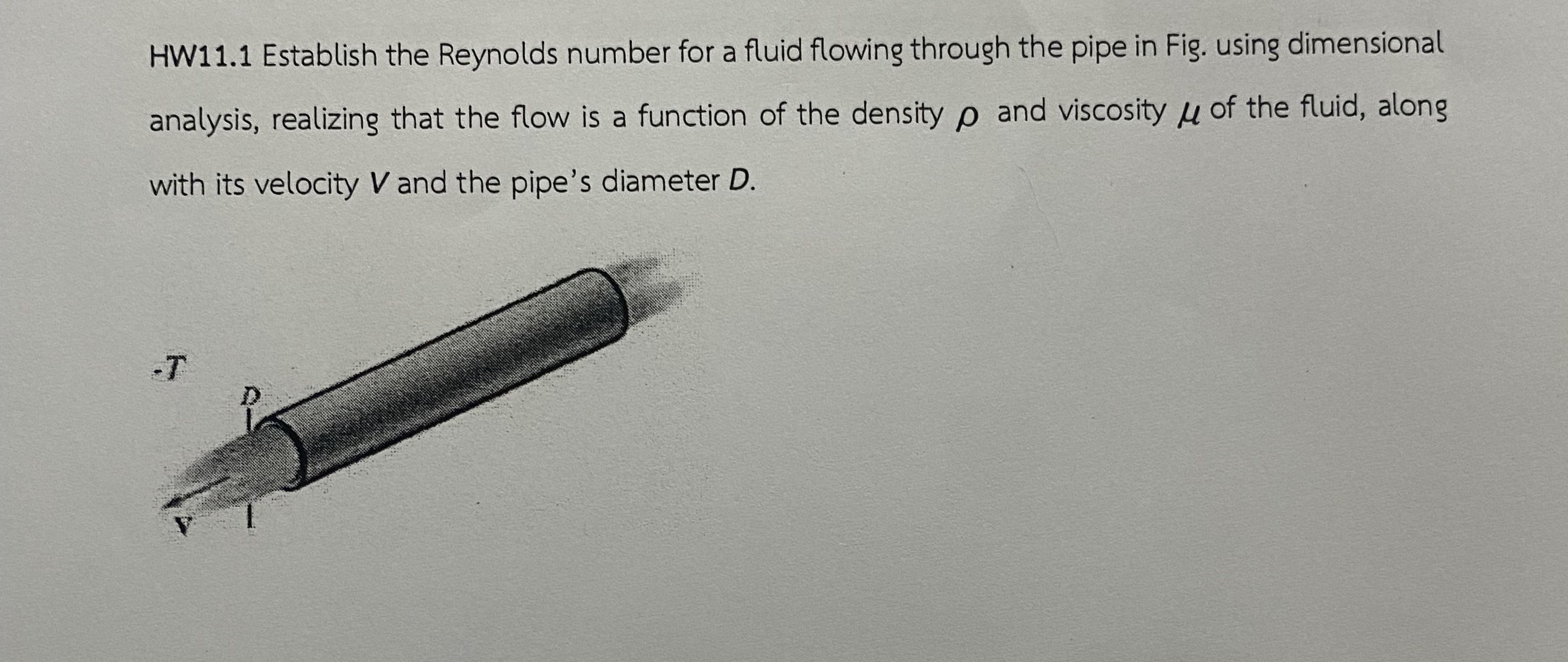Establish the Reynolds number for a fluid flowing through the pipe using dimensional analysis, realizing that the flow is a function of the density and viscosity of the fluid, alon... Establish the Reynolds number for a fluid flowing through the pipe using dimensional analysis, realizing that the flow is a function of the density and viscosity of the fluid, along with its velocity and the pipe's diameter.

Understand the Problem
The question is asking to establish the Reynolds number for fluid flowing in a pipe, using dimensional analysis with given factors such as density, viscosity, fluid velocity, and pipe diameter. This requires understanding the relationship between these variables.
Answer
The Reynolds number is defined as $Re = \frac{\rho V D}{\mu}$.
Answer for screen readers
The Reynolds number is given by the formula: $$ Re = \frac{\rho V D}{\mu} $$
Steps to Solve
-
Identify the Variables The Reynolds number ($Re$) is a dimensionless quantity that depends on the fluid density ($\rho$), dynamic viscosity ($\mu$), velocity ($V$), and diameter of the pipe ($D$).
-
Express Dimensions of Variables
- Density $\rho$: $[M L^{-3}]$
- Viscosity $\mu$: $[M L^{-1} T^{-1}]$
- Velocity $V$: $[L T^{-1}]$
- Diameter $D$: $[L]$
-
Formulate the Reynolds Number The Reynolds number can be expressed as: $$ Re = \frac{\rho V D}{\mu} $$
-
Dimensional Analysis Substitute the dimensions into the equation for $Re$: $$ Re = \frac{[M L^{-3}] \cdot [L T^{-1}] \cdot [L]}{[M L^{-1} T^{-1}]} $$
-
Simplify the Dimension This simplifies to: $$ Re = \frac{[M L^{-3}] \cdot [L^2 T^{-1}]}{[M L^{-1} T^{-1}]} = \frac{[L^2 T^{-1}]}{[L^{-1} T^{-1}]} = [L^3 T^0] \cdot [L^1 T] = [L^2] $$
-
Conclusion Since the result is dimensionless, the form of the Reynolds number is validated.
The Reynolds number is given by the formula: $$ Re = \frac{\rho V D}{\mu} $$
More Information
The Reynolds number helps predict flow patterns in different fluid flow situations. It indicates whether the flow is laminar or turbulent, with values less than 2000 typically indicating laminar flow, and values greater than 4000 indicating turbulent flow.
Tips
- Mixing up units when substituting for the variables can lead to incorrect dimensions, hence ensuring correct use of dimensional analysis is crucial.
- Forgetting that the Reynolds number is dimensionless; this leads to mistakes in interpreting the results.